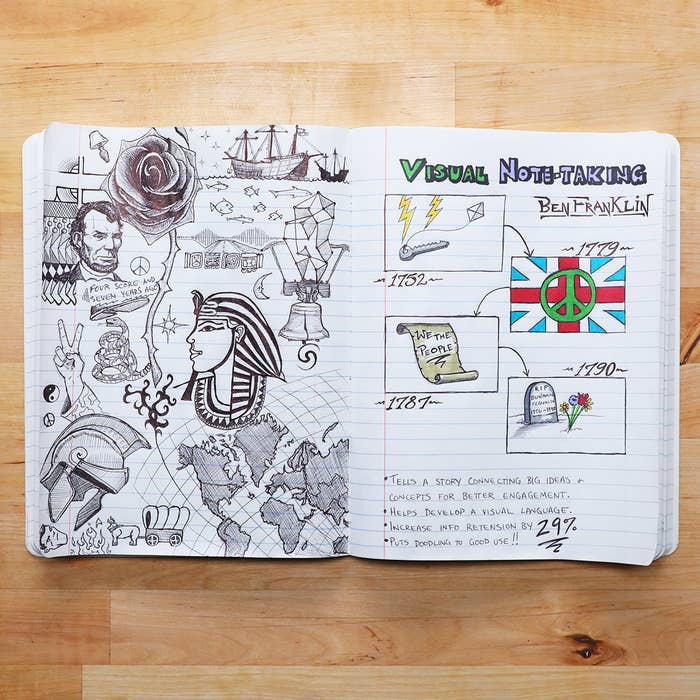Note-Taking Strategies In 15 Minutes or Less

CORNELL METHOD
A very structured and helpful style of note-taking that is useful in any occasion.
1. On the right side of the note-taking structure, you want to record the main lecture notes.
2. During the class and as soon as the class is over, you want to write questions and keywords on the left. This helps establish connections within the topic of discussion and will improve your information recall. This also sets up a great structure for studying.
3. You can then fold the paper in half, from right to left, as a study tool.
Remember to review the information on a regular basis to fully retain the information.
MIND MAPPING
A visual diagram that helps the note-taker draw natural conclusions and connections visually and mentally while taking notes.
1. Start with your central idea in the middle of the mind map. You can use a word or image to represent the main concept.
2. Create branches off of the main concept, grouping ideas that naturally connect in your mind. With each new idea, add more branches off of that, expanding the mind map.
3. The radiant structure of a mind map relates to how you think about an idea, making it easier to organize and recall the information.
4. Mind mapping allows the user to see the big picture and how the many concepts and subconcepts connect.
5. Color coding and using images improves recall of information.
6. Note-taking in a nonlinear way encourages the note-taker to actively listen to the lecture so they can create natural connects and groupings within their mind map.
7. Mind maps are useful for many situations, such as note-taking, brainstorming, and group projects.
SKETCH NOTE-TAKING
A visual style of note-taking that utilizes visual cues mixed with words and colors to engage the note-taker and have them take more memorable notes.
1. Find the right tools that you are comfortable writing and drawing with quickly and efficiently. Start with the basic tools, such as a pen or pencil. Adding color can come later, once you have honed your sketch note-taking skills.
2. Text should be brief, focusing on key points, quotes, and concepts. Try not to summarize everything that is said; try to focus on what’s most important.
3. Develop visual icons you can sketch quickly that represent ideas and concepts that can easily be referenced. Also, these icons should be simple and adaptable to fit different ideas, so they can be used to represent many different things.
4. Sketch note-taking is a personalized style, and the user should not worry about creating beautiful art. These are informal doodles to help understand and learn information.
